-
Written ByFelipe Bernardes

-
Last UpdatedFebruary 11, 2020
Bootstrap alternatives: The top 36 options in 2021
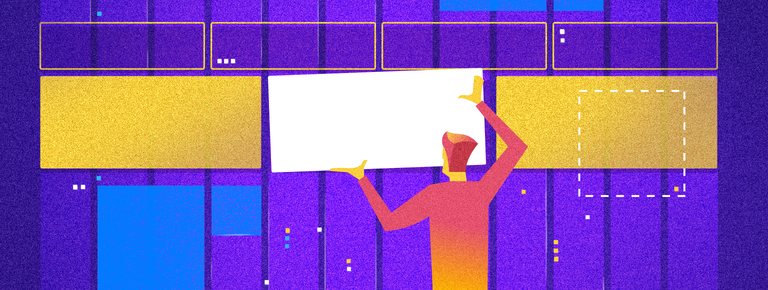
These days, the number one requirement of any website is to run correctly on all kinds of devices (especially mobiles). For that end, Bootstrap has been one of the most popular front-end frameworks and has been featured in the top list of many developers for designing mobile-friendly websites.
While Bootstrap is undoubtedly amazing at what it does, there are some other frameworks that are equally good and may fit your requirements better.
In this article, we'll list 36 Bootstrap alternatives that might be more suitable for you in different scenarios.
As you all know, devices like mobiles and tablets have smaller screen sizes and limited memory compared to desktop computers. So, it's not always a good choice to include the complete Bootstrap framework in your code because of its large file size. Instead, you may use a library with a lighter footprint than Bootstrap but that provides all the necessary functionalities.

There are tons of other reasons that may convince you to have a sneak peek at some available alternatives to Bootstrap. So, let’s get started by taking a look at these 34 Bootstrap Alternatives (ordered alphabetically).
Table of content
- 1- Foundation
- 2- Bulma
- 3- Tailwind CSS
- 4- HTML5 Boilerplate
- 5- Material UI
- 6- Metro UI
- 7- UIKit
- 8- Materialize
- 9- Element
- 10- Onsen UI
- 11- Material UI (MUI)
- 12- Cirrus
- 13- MontageJS
- 14- Pure CSS
- 15- Semantic UI
- 16- Material Design Lite
- 17-Groundwork
- 18- Cardinal
- 19- Flexbox Grid
- 20- Susy
- 21- Inuit
- 22- 960 Grid System
- 23- Jeet
- 24- INK
- 25- Skeleton
- 26- Kickstart
- 27- Bootflat
- 28- Gumby
- 29- Topcoat
- 30- HTML Kickstart
- 31- Mueller
- 32- Simple Grid
- 33- Powertocss
- 34- ArtDesignUI
- 35- YUI
- 36- Zimit
Best Bootstrap Alternatives
1. Foundation

The most advanced responsive front-end framework in the world. Quickly create prototypes and production code for sites that work on any kind of device.
Foundation is a family of frontend frameworks that make it easy to build responsive websites, apps and emails for any device.
It's one of the most comprehensive frontend frameworks, being even more thorough than Bootstrap. Everything you need to set up your apps you will find in a Foundation framework: a responsive mobile-first layout system, JS plugins, customization, a grid system, typography, UI components, utility classes, etc.
There's even a whole framework dedicated to emails (which is basically unheard of in the frontend frameworks ecosystem).
This framework is giving Bootstrap a hard time. Developers admire It because of its unmatched flexibility.
Is Foundation a complete bootstrap alternative?
Yes. In fact, if you want a professional-grade framework, Foundation might be a better option.
Alternative to Bootstrap: pro and cons
Pros:
- Foundation can be easily customized to match specific requirements.
- Professional training and certification is available
- Offers an unparalleled (separate) frontend framework targeted to emails
- Ruby on Rails friendly
- Support for Right-to-Left languages
Cons:
- It has a steep learning curve since it's so thorough
- Uses opinionated CSS preprocessor (Sass)
- It's a bit on the heavy side when it comes to IO footprint
Github : github.com/foundation/foundation-sites
Popularity: Very popular (28,559 stargazers)
Maintenance quality: Actively maintained
Learn to build a responsive site with Zurb Foundation >>>
Search for the best Foundation courses below:
2. Bulma

Bulma is is a CSS framework heavily inspired by Bootstrap and based on the modern Flexible Box Module, usually referred to as flexbox.
This framework contains all the most standart frontend elements you can find on Bootstrap (minus the JS plugins): mobile-first responsive layout, normalized CSS, customizable theme, basic typography, helper CSS classes, common UI components such as menus, modals, breadcrumbs, cards, among other things.
Is Bulma a complete bootstrap alternative?
Not exactly. Since it's purely a CSS framework, there's no JS plugins included. If you don't use Bootstrap's JS plugins, then it can be considered a complete alternative
Alternative to Bootstrap: pro and cons
Pros:
- A super simple grid system
- 100% responsive (mobile-first)
- Modular (only include what you need)
Cons:
- Grid system is based on flexbox, which is not the ideal technology for bidimensional layouts (flexbox is better for linear layouts)
Github : github.com/jgthms/bulma
Popularity: Very popular (39,091 stargazers)
Maintenance quality: Actively maintained
Learn to build websites with Bulma >>>
Search for the best Bulma courses below:
3. Tailwind CSS
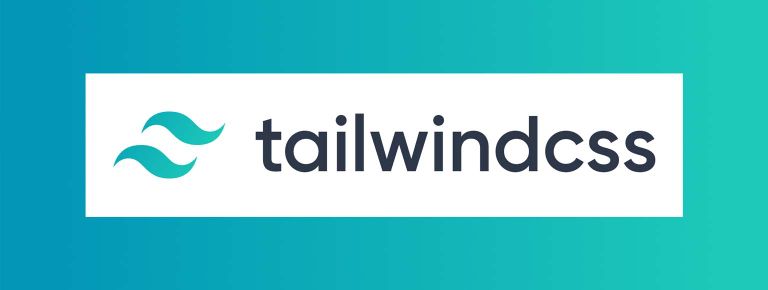
Tailwind CSS is a highly-customizable, low-level CSS framework built entirely around the concept of utility classes, which Bootstrap also provides out-of-the-box. With utility classes, you can mix and match CSS properties anywhere without necessarily resorting to inline styles.
Is Tailwind CSS a complete bootstrap alternative?
Sort of. Although Tailwind CSS on its own doesn't provide common components such as buttons or forms (like Bootstrap does), there are free and paid alternatives built around the framework:
- Tailwind Components (free alternative)
- Tailwind UI (paid alternative, built by the framework's creators)
Alternative to Bootstrap: pro and cons
Pros:
- Highly customizable due to being built around utility classes
- Barebones framework means less stuff in your CSS bundle with the same result
- All utility classes are responsive
- Component friendly: you can easily build your own components
Cons:
- The usage of utility classes is highly controversial. Some teams prefer to use semantic CSS over utility classes, which makes adoption a churn in itself.
- No components out-of-the-box. You have to look for or create them yourself.
Github : github.com/tailwindcss/tailwindcss
Popularity: Very popular (39,091 stargazers)
Maintenance quality: Actively maintained
Here is a Complete Guide to Tailwind or you can search for more options below:
4. HTML5 Boilerplate

HTML5 Boilerplate is not a framework but an HTML5, CSS3 and JavaScript frontend template, born out of a combined knowledge of 100s of developers. It is used to design any kind of web page, and helps you build fast, robust, and adaptable web apps or sites.
Basically it comes with all the necessary building blocks in a vanilla frontend bundle to design a simple or complex website, such programming language as CSS helper classes, default print styles, Normalize.css, Modernizr, jQuery.
Is HTML5 Boilerplate a complete bootstrap alternative?
No. It includes CSS "utility" classes but they're very limited. There's also no component or layout modules, it's really just a boilerplate template. Any sophisticated customization is up to the user.
Alternative to Bootstrap: pro and cons
Pros:
- HTML5 ready
- Designed with progressive enhancement in mind
- Includes a bundle to offer the best and most modern experience to date
- Built-in support for printing a web page
- Complete and easy to understand documentation for each and every line of code.
Cons
- Its latest version has dropped full-compatibility support for older web browsers (IE11 or less) although there are legacy, no longer maintained versions that support those browsers.
Github : github.com/h5bp/html5-boilerplate
Popularity: Very popular (44,515 stars)
Maintenance quality: Actively maintained
Get started with Html5 Boilerplate or search for more courses below:
5. Material UI

Material UI is a React UI framework, based on the Material Design system by Google.
At its core, Material UI is a collection of React-based components with the Material Design concepts applied upon them. The underlying premise is that every UI element in your application is a React component, even the building blocks (containers, layouts...). Every customization is done in a JS environment, even the styling, using the approach of CSS-in-JS, very common in React apps.
Is Material UI a complete bootstrap alternative?
Yes, but only limited to React-based applications.
Alternative to Bootstrap: pro and cons
Pros:
- Customizable (concept of themes)
- Based on Material Design, which is a design system backed by Google's UI experts
- A plethora of reusable components that can be included as needed
- Free and premium templates to quickly prototype from
Cons:
- Only usable in a React environment
- Opinionated styling approach (CSS-in-JS)
- No utility CSS classes
- No first-class mobile support
Github : github.com/mui-org/material-ui
Popularity: Very popular (44,515 stars)
Maintenance quality: Actively maintained
6. Metro UI
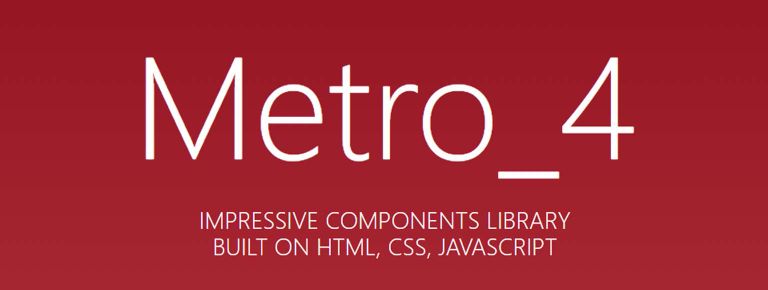
Metro UI is a frontend framework that brings the concept of Metro (Design Language) from Windows (OS) to the web. It is packed with 100+ user interface components to help you design any kind of website.
It offers everything that Bootstrap does, almost to the point of being a copy (at least when it comes to styling). Metro UI also comes with a JS library called M4Q that is basically a substitute for jQuery and upon which many JS-based functionalities are built.
Is Metro UI a complete bootstrap alternative?.
Yes, Metro UI is a great option.
Alternative to Bootstrap: pro and cons
Pros:
- It's almost like using Bootstrap with a different and terser javascript core library
- Built-in internationalization (i18n) support
- Interoperable with major JS frameworks (Angular, React and Vue)
Cons:
- The Metro Design Language follows the typographic principle, which is opposed to the skeuomorphic approach. Applications using the latter could completely lose their "charm" under Metro.
- Documentation is confusing and rough around the edges
Github : github.com/olton/Metro-UI-CSS
Popularity: Popular (6,496 stargazers)
Maintenance quality: Actively maintained
7. UIKit

UIKit is a responsive modular front-end framework designed to be lightweight and simple to use. It was built to design pixel-perfect web layouts for mobile and desktop screens.
It includes many UI components that work just like Bootstrap, that can be wired with either HTML markup or JS code. There are even novelty components like Totop, Thumbnav, etc.
Is UIKit a complete bootstrap alternative?.
Yes, UIKit is a great option.
Alternative to Bootstrap: pro and cons
Pros:
- Interoperable CSS preprocessing with either Less or Sass
- Support for Right-to-Left languages
- Built-in icon library
Cons:
- Utility classes are very limited compared to Bootstrap
- 600+ open issues on Github is a bit of a yellow flag. It can be too early to use this framework in an enterprise-level application.
Github : github.com/uikit/uikit
Popularity: Very Popular (15,565 stargazers)
Maintenance quality: Actively maintained but has many open issues
Learn the UIKit Fundamentals or search for more courses below:
8. Materialize
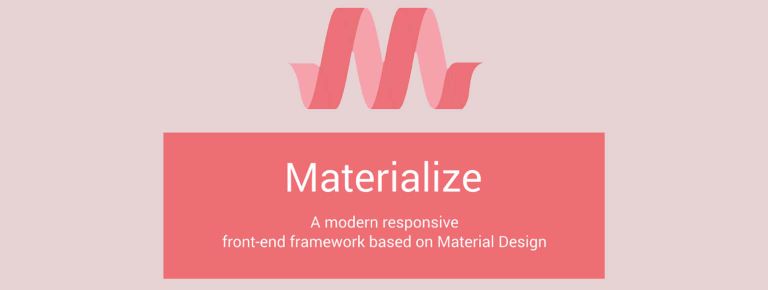
Materialize is a modern responsive CSS framework based on Material Design by Google. Because it's based on Material Design, the framework incorporates components and animations that provide more feedback to users.
The UI components are very similar to Bootstrap's (including JS plugins), but they look and feel lighter, which makes projects more pleasing to see and use.
There are specific framework plugins to address UX issues specific to mobile devices, such as lateral menu dragging and toasting.
Is Materialize a complete bootstrap alternative?.
Yes, Materialize is a great option.
Alternative to Bootstrap: pro and cons
Pros:
- Extendable through Sass preprocessing
- Ruby on Rails friendly
- Specific plugins to address UX on mobile devices
- Refined animations and transitions system provide for a better user experience
- Materialize developers have designed premium themes that can be purchased from their website. Existing themes boost your prototyping speed.
Cons:
- Materialize framework has a large community but it still has 700+ open issues on Github that need to be addressed.
Github : github.com/Dogfalo/materialize
Popularity: Very Popular (37,284 stargazers)
Maintenance quality: Actively maintained but has many open issues
Join the complete Bootstrap and Materialize CSS course >>>
9.Element

Element is a set of reusable, pre-designed Vue.js components. Principles such as consistency, feedback, efficiency and controllability drive the design decisions behind this framework.
Just as with React-based Metro UI, every UI entity in an Element-based project has to be a Vue.js component, even building blocks like Layouts and Grids. Styling customization is done via Scss preprocessing.
Is Element a complete bootstrap alternative?
>Yes, but only limited to Vue.js-based applications
Alternative to Bootstrap: pro and cons
Pros:
- Customizable themes
- Gitter chat with the community
- Atom / Visual Studio Code integration
- Sketch / Axure Wireframing Integration
- Laravel starter kit
- Built-in internationalization support (i18n)
- Element is distributed with an MIT license which allows you to use its code however you like.
Cons:
- Only usable in a Vue.js environment, although there are versions for Angular and React that might not be as complete as the original one.
- No first-class mobile support
- It still has 1000+ open issues on Github that need to be fixed. The community is huge but contributions have been decreasing. The framework also spawns a whole array of other dependencies, which might have a multiplier effect on the number of issues.
- Many resources (official and unofficial) are in Chinese only
Github : github.com/ElemeFE/element
Popularity: Very Popular (44,465 stargazers)
Maintenance quality: Actively maintained but has many open issues
10. Onsen UI
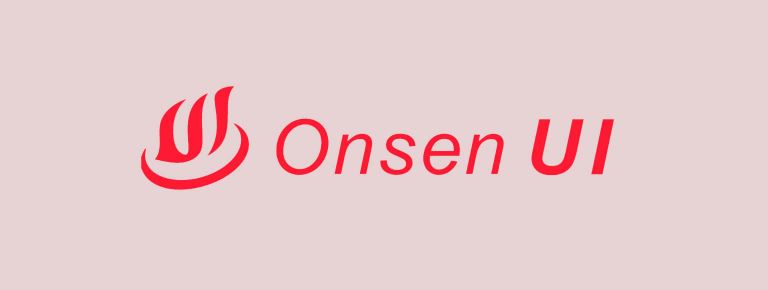
Onsen UI is an UI development framework for hybrid (Cordova, etc) and web (PWA) mobile apps. It allows developers to create mobile applications using web technologies like CSS, HTML5, and JavaScript.
It offers all the basic UI components needed for a mobile application UX.
Onsen was initially based on AngularJS and supported jQuery. It's now its own flavor of framework and has bindings for jQuery, AngularJS, Angular, React and Vue.js.
Is Onsen UI a complete bootstrap alternative?
No. It's specifically designed for mobile applications development
Alternative to Bootstrap: pro and cons
Pros:
- Customizable themes
- A rich variety of UI components specially designed for mobile apps.
- Offers end-users the native experience they expect from apps on their devices
- CSS is written in Cssnext, meaning all new CSS syntax is available to use
- Based on native Web Components and provides bindings for AngularJS, Angular 2, React and Vue.js
Cons:
- Doesn't come with a free debugger, which means developers have to look at each line of code individually
Playground : onsen.io/playground/
Github : github.com/OnsenUI/OnsenUI
Popularity: Popular (7,885 stargazers)
Maintenance quality: Actively maintained
Learn to develop Android mobile apps with Onsen UI >>>
11. Material UI (MUI)
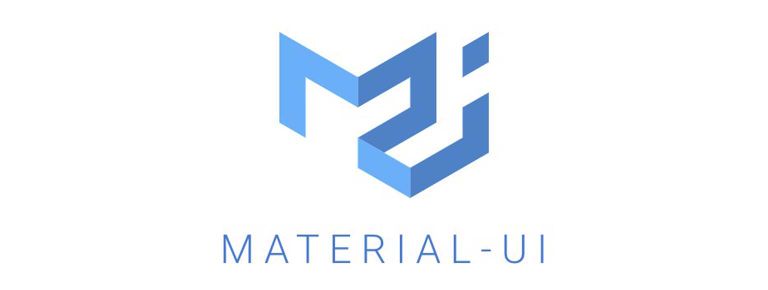
Material UI (MUI) is a lightweight frontend framework that follows Google's Material Design guidelines. The main upside of using MUI is its small footprint (up to 10KB for the whole framework). It's customizable using a SASS preprocessor and has no CSS/JS external dependencies. The goal of the project is to provide a basic set of components and helper methods that developers can use to build sites that are fast and user-friendly.
It has working interoperability with React (Angular and native WebComponents are on the roadmap).
Is Material UI a complete bootstrap alternative?
Yes, Material UI is a great option.
Alternative to Bootstrap: pro and cons
Pros:
- Small footprint
- Offers both "px" and "rem" based CSS files
- Specialized support for emails
- CSS helpers (utilities)
- Customizable theming
- Design files for Sketch
Cons:
- No Vue.js interoperability
- No specific mobile-first UX
- Low popularity
Github : github.com/muicss/mui
Popularity: Niche (4,309 stargazers)
Maintenance quality: Actively maintained
12. Cirrus
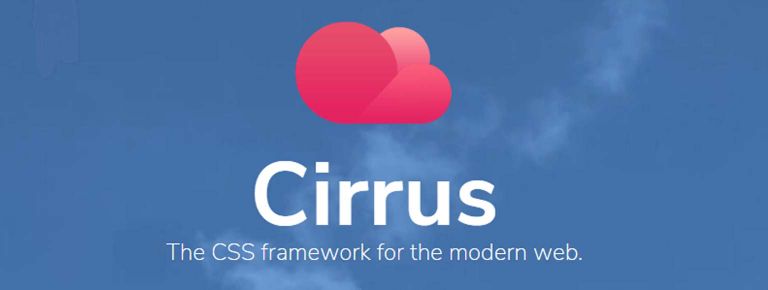
Cirrus is a fully responsive and comprehensive CSS-only framework with beautiful controls and simplistic structure. You can integrate Cirrus with any existing design or use it to kick start your next project. It comes with two package options: a "core" package with simple styling and functionality and an "ext" package that extends "core" with a subset of components for quick prototyping.
Is Cirrus a complete bootstrap alternative?
No. There are no JS plugins available. If you don't use Bootstrap JS plugins, then it can be considered a complete alternative.
Alternative to Bootstrap: pro and cons
Pros:
- Simplified responsive layout breakpoints (mobile, tablet and desktop)
- Provides two modern alternatives for layout: flexbox and grid
- Cirrus is open source and free to use for personal or commercial web projects.
- Interoperability with Vue.js (via a third-party package)
Cons:
- Limited utility classes
- No JS plugins, which means you have to code them yourself if you need to
- It only has 5 contributors and a small community of users.
Github : github.com/Spiderpig86/Cirrus
Popularity: Low (369 stargazers)
Maintenance quality: Actively maintained
13. MontageJS

MontageJS is an application framework powered by the standard HTML5, CSS and JS web technologies. It is designed with an eye toward maintainability and performance by providing modular components, real-time two-way data binding, object serialization with DOM mapping, event handling, a managed component draw cycle, etc.
Is MontageJS a complete bootstrap alternative?
No. It doesn't really try to be a drop-in framework upon which you can build a satisfactory web application with minimal set up. It's basically focused on code organization and optimization.
Alternative to Bootstrap: pro and cons
Pros:
- Provides a complete software development kit to create or manage modern single-page applications called Montage Studio, though the documentation on the usage is very terse.
- It makes it easier to manage your application and UI state with data bindings.
- Components can be standalone HTML applications, making it easy to prototype and test
- MontageJS minimizes the expensive layout reflows to help the user end.
- Uses an interesting library under the hood called FRB (Functional Reactive Binding) which is basically a "reactive" data-binding library but with functional syntax (which makes it reliable and easy to extend)
Cons:
- Documentation for the framework is lacking both updated information and logical structure, to the point of looking like an abandoned project. At most it's not a stable and/or professional ready library.
- Due to poor documentation, it's a bit difficult to set up
- It has 100+ unique issues that require the attention of its maintainers and/or other contributors.
Github : github.com/montagejs/montage
Popularity: Low (1,515 stargazers)
Maintenance quality: Actively maintained but documentation is terse, lacking and confusing
14. Pure CSS
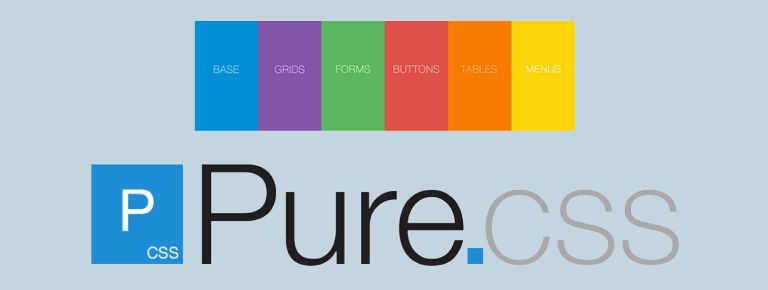
Pure is a CSS framework developed by YAHOO. It helps you develop faster, beautiful and responsive websites with a minimal footprint (the entire set of module clocks is around 4KB). It uses Normalize.css and provides layout and styling for common UI components. It's like a better and slightly fancier Normalize. It uses the SMACSS architecture to modularize the CSS code, which makes it a modular framework by nature.
Is Pure CSS a complete bootstrap alternative?
No. There are no accompanying JS plugins and the CSS codebase is very minimalistic. It's better suited as a starter kit.
Alternative to Bootstrap: pro and cons
Pros:
- Minimal footprint
- Modular: It is divided into different and independent modules (tables, grid system, navigation menu etc.)
- Each module is available in a separate file and they have a very small file size which is a plus point for websites that need more efficiency.
Cons:
- Limited amount of utility CSS selectors
- Pure CSS hasn’t received any significant improvement from quite some time now.
Github : github.com/pure-css/pure/
Popularity: Popular (20,674 stargazers)
Maintenance quality: It's been a while since the last commit was submitted (almost 8 months). It's not really a
problem though if you consider that it's a minimalistic framework.
Boostrap alternatives with successors
15. Semantic UI

Semantic UI's major selling point is that it allows writing meaningful, human-readable HTML code (thus the semantic) instead of using unintuitive, verbose methodologies centered around BEM or SMACSS.
It has a huge collection of reusable UI elements that can be dropped anywhere in your HTML code to get instant results. Semantic UI is dev-friendly as well, including debugging JS capabilities natively.
The original project is no longer maintained but there's a community-maintained fork called Fomantic UI, which has active maintenance.
Is Semantic UI a complete bootstrap alternative? .
Yes, except for the fact that there are no utility classes.
Alternative to Bootstrap: pro and cons
Pros:
- Built to work across multiple platforms and devices
- JS plugins included can be easily debugged
- Human-friendly HTML code
- Extendable theming
Cons:
- There are no utility classes like Bootstrap (due to heavy usage of semantic markup)
- No formal design system (UI components are created by the community following loosen guidelines)
- A gigantic number of issues (approx. 850+) are waiting to get responses from contributors of Semantic UI (in the meantime, use the Fomantic UI fork, the community official fork)
Github : github.com/semantic-org/semantic-ui/
Popularity: Very popular (47,589 stargazers)
Maintenance quality: Official repo's activity is stale but its successor (Fomantic UI) is being actively
maintained
Successor:
Github : github.com/fomantic/fomantic-ui/
Popularity: Low (1618 stargazers)
Maintenance quality: Actively maintained
Search for more course options:
16. Material Design Lite

Material Design is a Design System invented by the creative designers at Google. It quickly got popular because of its clean and tidy user experience. Google designers then released a complete CSS framework called Material Design Lite to get help from the open source community for its further development.
Material Design Lite adds the look and feel of Material Design to your static content websites. It doesn't rely on any JavaScript frameworks or libraries. Optimized for cross-device use, gracefully degrades in older browsers, and offers an experience that is accessible from the get-go.
This project is no longer maintained. However, there's an actively maintained project called Material Components Web, which is the Github repository for the official Material project. It extends what Material Design Lite offers, providing more flexible theming customization, not only in terms of color, but also typography, shape, states, and more. It is also specifically architected for adaptability to various major web frameworks.
Is Material Design Lite a complete bootstrap alternative?
No. The current official repo for the Material components offers a more complete experience built around the Material design system. It's only components though so there is no concept of utility classes or any other extensible concept outside a design system.
Alternative to Bootstrap: pro and cons
Pros:
- It is powered by tech giant Google.
- It provides readymade Material design components.
Cons:
- Built around a specific Design System, so extendable up to a point (no utility classes, for example)
- No longer maintained
Github : github.com/google/material-design-lite
Popularity: Very popular (31,562 stargazers)
Maintenance quality: No longer maintained
Successor:
Github : github.com/material-components/material-components-web
Popularity: Popular (14,084 stargazers)
Maintenance quality: Actively maintained
Get started with Material Design >>>
Search for other course options below:
Boostrap alternatives that are no longer maintained
17. Groundwork

Groundwork CSS framework is a responsive HTML5, CSS and Javascript Framework. It has complete support for "ARIA state/role" attributes and semantic element selectors
Is Groundwork a complete bootstrap alternative?
No, It's no longer maintained.
Alternative to Bootstrap: pro and cons
Pros:
- It has a responsive grid system that can be easily nestable to create complex web designs.
- Rapid prototyping and wireframes with dynamic placeholder text, images, and fonts
Cons:
- The source code of Groundwork on Github is archived by its owner, so it's no longer maintained
Github : github.com/groundworkcss/groundwork
Popularity: Low (1,683 stargazers)
Maintenance quality: No longer maintained
18. Cardinal

Cardinal is a modular, "mobile-first" CSS framework built with performance and scalability in mind. It doesn't have any unnecessary code-related UI design, which makes its structure very light compared to Bootstrap. Plus, it allows complete control over the appearance of websites.
Is Cardinal a complete bootstrap alternative?
No, it's no longer maintained.
Alternative to Bootstrap: pro and cons
Pros:
- The minified version of Cardinal framework is available at almost 11 KB file size, which is perfect for websites that must load within the first few seconds.
- Very easy to scale existing codebase as your project grows.
Cons:
- No longer maintained
Github : github.com/cardinalcss/cardinalcss
Popularity: Low (707 stargazers)
Maintenance quality: No longer maintained
19. Flexbox Grid

Flexbox is a grid system based on the flex display property. The grid system is very similar to Bootstrap 4's flex-based system.
Is Flexbox Grid a complete bootstrap alternative?
No, it's just a grid system. It's also no longer maintained so choose any other active framework. If you want just a grid system, consider using native CSS Grid.
Alternative to Bootstrap: pro and cons
Pros:
- It can make your web page responsive and fluid.
- Very easy to grasp if you are already familiar with the Bootstrap framework basics.
Cons:
- It comes with a modern grid system but doesn’t have any readymade user interface elements. So, you have to design the web pages from scratch.
- Flexbox is used to design simplified one-dimensional layouts, with a straight-line layout, and is best suited for app components and small-scale layouts.
- No longer maintained
Github : github.com/kristoferjoseph/flexboxgrid
Popularity: Popular (8,736 stargazers)
Maintenance quality: No longer maintained
20. Susy
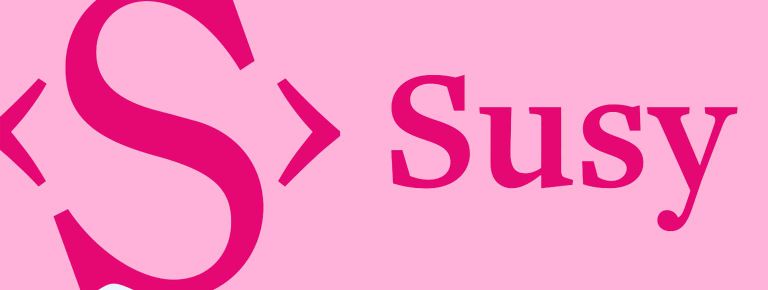
Susy is a lightweight grid-layout engine for Sass, designed to simplify the usage of grid layouts without ever getting in your way, whether the grid is floats, flexbox, or tables based. Susy works directly in the style of the classes you have defined and customized.
It was created in a time where there was no native CSS Grid and the flexbox support was very limited, so there is not much reason to use it nowadays.
Is Susy a complete bootstrap alternative?
No, it's just a grid system for Sass-based projects. Also, it's no longer maintained
.Alternative to Bootstrap: pro and cons
Pros:
- Very flexible
- Provides a step by step installation guide whether you are using Eyeglass, Webpack, Gulp, Grunt or even Yeoman.
- It doesn’t require adding classes to markup.
Cons:
- It's just a grid system
- To start using it you need to have Sass installed and a minimum of knowledge about it.
- It doesn’t have any pre-existing components.
- No longer maintained
Github : github.com/oddbird/susy
Popularity: Low (3,943 stargazers)
Maintenance quality: No longer maintained
21. Inuit
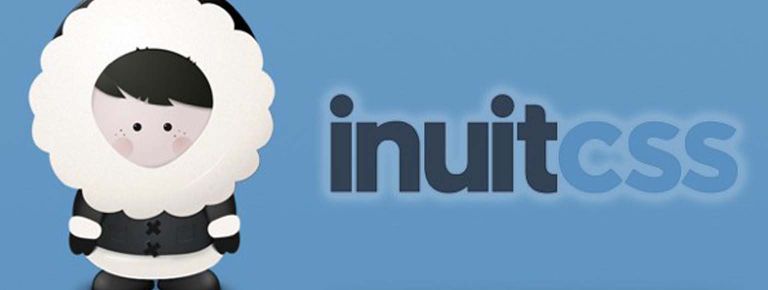
Inuit is a framework in its truest sense: it does not provide you with UI and design out of the box, instead, it provides you with a solid architectural baseline upon which to complete your own work.
It basically outlines an organizational structure of CSS code and lays out the path to make UI authoring (design system, component building, etc) obvious. Although it claims to be an OOCSS framework, it's actually a mix and match of OOCSS and BEM.
It is styling-free which means it can be used on any and all types of project (and it has) without dictating (or even suggesting) a look-and-feel. If you do require a UI out of the box, then this framework is not the best tool (so, not really a complete alternative for Bootstrap)
Is Inuit Grid a complete bootstrap alternative?
No. It's not a good option.
Alternative to Bootstrap: pro and cons
Pros:
- It is a well-structured CSS framework that follows the best architectural methodologies
- Created by the famous Harry Roberts from CSS Wizardry, an award-winning frontend specialist
Cons:
- Not suitable for novice web designers because it has a steep learning curve.
- Dependent on Sass
- No components or styling baked in
- Community has stopped contributing to the project for almost a year now, though core members sometimes participate in issues discussions
Github : github.com/inuitcss/inuitcss
Popularity: Low (1,613 stargazers)
Maintenance quality: Maintenance is stalled (community discussions still happen)
22. 960 Grid System
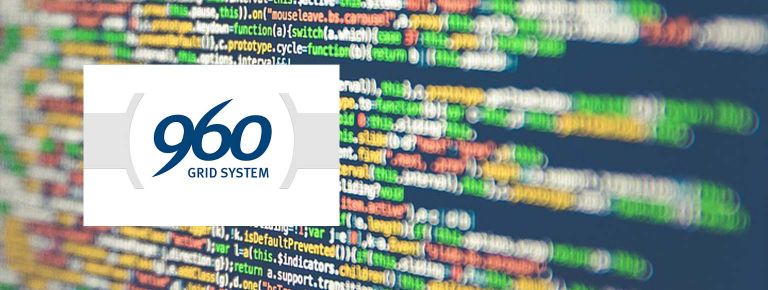
As its name anticipates, 960 Grid System was a grid CSS framework tailored to desktop applications. Back when it was created, mobile web applications were almost non-existent and most desktop viewports were around 960px wide, thus the name. It's so old it's not even responsive.
Is 960 GS a complete bootstrap alternative?
No, it's a grid system
Alternative to Bootstrap: pro and cons
Pros:
- Great for designing a quick prototype of any web page.
- Small footprint
Cons:
- It doesn't provide a responsive or fluid design as core functionality.
- Outdated and no longer maintained
960 Grid System's creator built a successor called Unsemantic but it's been a while since it was last updated. If you need to use a grid system only, it's best to stick to native CSS Grid.
Github : github.com/nathansmith/960-Grid-System/
Popularity: Low (3,590 stargazers)
Maintenance quality: No longer maintained
Successor:
Github : github.com/nathansmith/unsemantic
Popularity: Low (1,363 stargazers)
Maintenance quality: No longer maintained
23. Jeet

Jeet is a grid CSS framework for Sass or Stylus based projects. Grids are written using semantic markup (such as "column(⅓)") relying on heavy usage of mixins (Sass/Stylus functions). It uses outdated techniques for layouts (floats, clearfixes, etc).
Is HTML5 Boilerplate a complete bootstrap alternative?
No, it's a grid system.
Alternative to Bootstrap: pro and cons
Pros:
- Its source code is very lightweight because it only consists of a responsive grid system.
Cons:
- It's not responsive
- Uses outdated techniques for layout (floats, clearfixes, etc)
- No longer maintained
Much like other grid-only frameworks, it's best to stick to native CSS Grid nowadays.
Github : github.com/mojotech/jeet
Popularity: Low (3,053 stargazers)
Maintenance quality: No longer maintained
24. INK
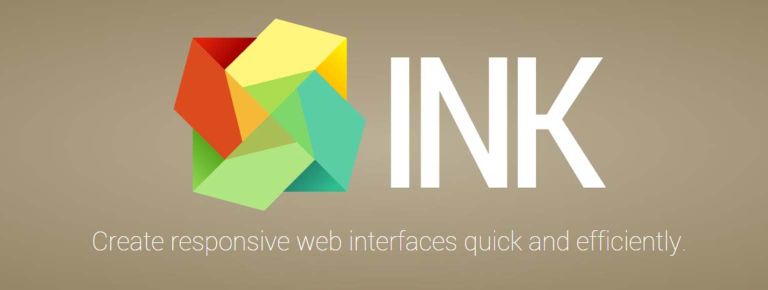
INK is a rapid web design framework that is created by the popular Portuguese company SAPO.
Initially, they started this project to speed up the development of their own websites. But, with time it became flexible enough to be used in any web application.
It has every Bootstrap UI functionality baked in (mobile-first styling, layout, typography, customizable, components, JS plugins, etc).
Is INK Grid a complete bootstrap alternative? .
Yes, Yes, INK can definitely work as an alternative.
Alternative to Bootstrap: pro and cons
Pros:
- Developers had added pre-designed cookbooks in INK framework through which you can quickly customize a theme and use it (start from scratch is also available).
Cons:
- Project is abandoned since all its core members have since left SAPO.
Github : github.com/sapo/Ink/
Popularity: Low (1,930 stargazers)
Maintenance quality: No longer maintained
25. Skeleton
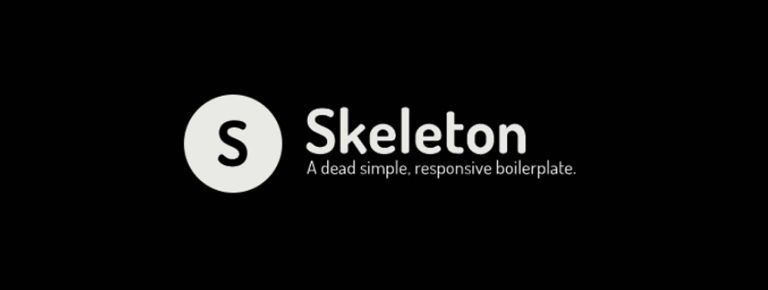
Skeleton is a collection of mobile-first CSS files built to quickly develop websites that adapt to any screen resolution (responsive by design). Its source code consists of approximately 200 lines so it's very lightweight. No compilation or installation needed as well. Despite the upsides, it uses outdated markup for layout (floats, clearfix, etc).
Is Skeleton a complete bootstrap alternative?
>No, it's a collection of boilerplate CSS files, meant to be a starting point, not a full-fledged UI framework.
Alternative to Bootstrap: pro and cons
Pros:
- Small footprint
- No compilation or installation needed
- Ensures the display of content to mobile devices with elegance and flexibility when adapting to browsers, allowing for portrait or landscape display.
- Skeleton grid is very simple and the result is the same in any browser.
Cons:
- No longer maintained
Github : github.com/dhg/Skeleton/
Popularity: Popular back when it was still maintained (17380 stargazers)
Maintenance quality: No longer maintained
Learn to build websites with Skeleton CSS
26. Kickstart
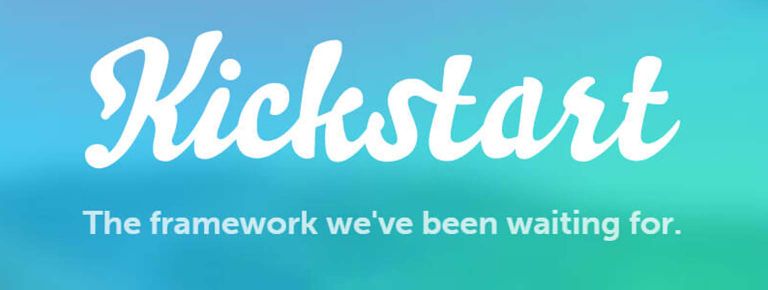
Kickstart CSS is a library that was based on Bootstrap but stripped of many components that would turn it into a full UI framework. In that sense, it's literally just a "kickstart" boilerplate library.
Most of the advanced CSS frameworks are available with a heavy footprint which in-turn decreases the websites' loading speed. Kickstart fits best in this scenario to minimize the problem.
Is Kickstart a complete bootstrap alternative?
No, it's a stripped down version of Bootstrap
Alternative to Bootstrap: pro and cons
Pros:
- Very lightweight as compared to Foundation and Bootstrap framework.
- Unlike other CSS frameworks, Kickstart doesn’t require jQuery.
Cons:
- If for some reason you want to support older web browsers for your audience then Kickstart may not be the right choice.
- No longer maintained
Github : github.com/adamjgrant/kickstart/
Popularity: Low (1,905 stargazers)
Maintenance quality: No longer maintained
27. Bootflat
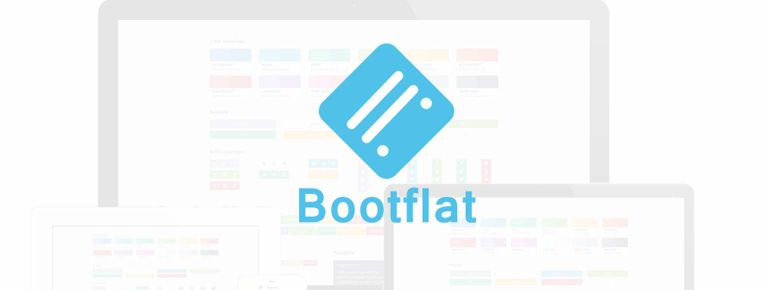
Bootflat works on top of the Bootstrap framework. So, basically it is not a Bootstrap alternative in a true sense. Instead, it's like a starter template or a user interface kit that helps you create modern web pages more quickly.
Is Bootflat a complete bootstrap alternative?
No, no longer maintained
Alternative to Bootstrap: pro and cons
Pros:
- Best choice for prototyping web pages.
- It is created according to the latest web design trends and works in all major web browsers.
Cons:
- It doesn’t support the latest version of the Bootstrap framework (Bootstrap 4).
- Bootflat project is completely dependent on Bootstrap and is unable to work independently.
- No longer maintained
Github : github.com/bootflat/bootflat.github.io
Popularity: Niche (4,274 stargazers)
Maintenance quality: No longer maintained
28. Gumby

Gumby is a CSS framework that can help you create responsive and mobile-friendly websites. It is packed with UI toolkit, grid, components, and extensions to provide an ultimate experience.
Is Gumby a complete bootstrap alternative? Yes, it was an interesting option but it’s no longer maintained.
Alternative to Bootstrap: pro and cons
Pros:
- Makes use of SASS to speedup customization.
- It has a step by step documentation regarding each concept.
Cons:
- Engineers have officially stopped its development.
Github : github.com/GumbyFramework/Gumby
Popularity: Low (2,935 stargazers)
Maintenance quality: No longer maintained
29. Topcoat
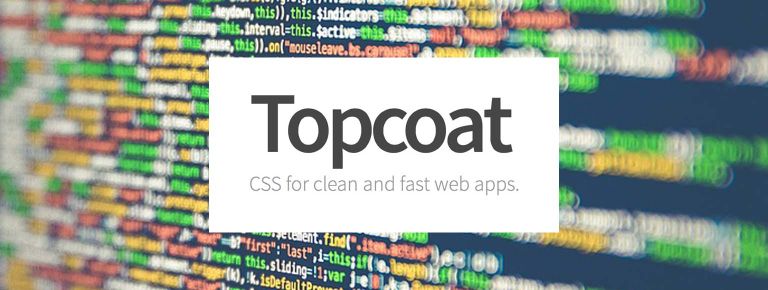
Topcoat is not a framework, it is an open-source component library built entirely on web standards (CSS and HTML).
Topcoat's library can be used along with any JavaScript framework (Backbone, Angular, etc). It is just a collection of CSS and HTML files. It has a very large set of pre-designed UI components that are ready to be included in any web design project.
s Topcoat a complete bootstrap alternative? No, no longer maintained.
Alternative to Bootstrap: pro and cons
Pros:
- It has complete support for older Internet Explorer 8+ as well as most of the modern web browsers.
Cons:
- No longer maintained
Github : github.com/topcoat/topcoat/
Popularity: Low (4,289 stargazers)
Maintenance quality: No longer maintained
30. HTML Kickstart
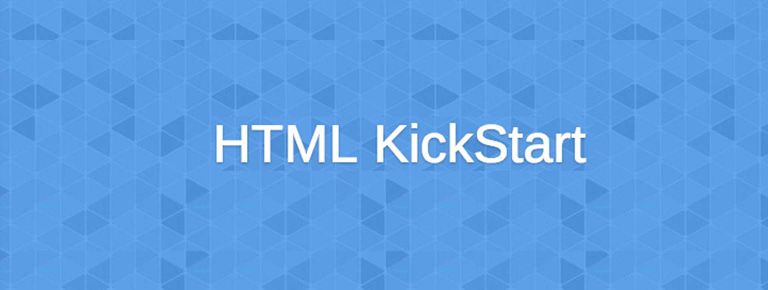
The HTML Kickstart project was started to help you speed up your web designing tasks by providing pre-built design elements like navigation menus, buttons, and animated sliders. This way you don't have to spend much time while designing a web page. You may instead focus on delivering quality work rather than struggling with how to get things right.
Is HTML Kickstart Grid a complete bootstrap alternative?
Yes, it was a great option but it’s no longer maintained.
Alternative to Bootstrap: pro and cons
Pros:
- One of the best CSS and JavaScript framework for rapid designing of a website.
- Its UI elements are capable of being displayed correctly in older browsers.
Cons:
- No longer maintained.
Github : github.com/joshuagatcke/HTML-KickStart
Popularity: Low (1,211 stargazers)
Maintenance quality: No longer maintained
31. Mueller

Mueller is a blazing fast CSS grid system that enables the design of responsive and adaptive website layouts. It is mainly used for prototyping, but it also handles backgrounds, borders, margins & paddings, radius as well as other additional typo-styles.
It is built upon Syntactically Awesome Style Sheets (Sass) and Compass (open-source CSS Authoring Framework).
Is Mueller a complete bootstrap alternative?
No, it's a grid system.
Alternative to Bootstrap: pro and cons
Pros:
- You have full control over column width, gutter width, baseline grid, and media queries.
- You just need to add rows and columns in a grid to create responsive design, everything else will be handled by Mueller automatically.
Cons:
- No longer maintained
Github : github.com/sehmaschine/mueller
Popularity: None (392 stargazers)
Maintenance quality: No longer maintained
32. Simple Grid
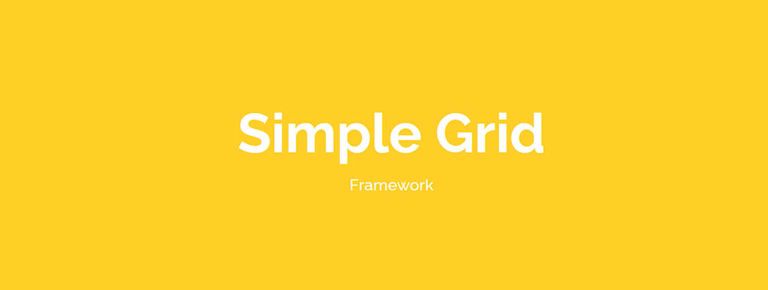
Simple Grid is a simple, lightweight grid and container system for websites. This is not a framework with items like forms and buttons. Simple Grid comes in handy when you don’t want extra design and theme-related features from Bootstrap.
Is Simple Grid a complete bootstrap alternative?
No, it's a grid system
Alternative to Bootstrap: pro and cons
Pros:
- Simple Grid allows developers to build websites on a foundation suited for mobile and tablet browsers.
- The twelve column structure of Simple Grid easily divides into columns of two, three, four or six, giving developers numerous layout possibilities.
Cons:
- Only recommended if you just want to add a responsive grid to support your website on mobile devices.
- No longer maintained
Github : github.com/zachacole/Simple-Grid
Popularity: None (735 stargazers)
Maintenance quality: No longer maintained
33. Powertocss

Powertocss is a versatile CSS Framework. Simple, light and responsive. By linking a single CSS file in your existing HTML5 code and then applying pre-defined classes, it will automatically convert your static web pages into more accessible mobile-friendly layouts. That’s the power you get from Powertocss.
Powertocss is based on the principles of SMACSS (Scalable and Modular Architecture for CSS) and DRY (Don’t Repeat Your CSS).
Is Powertocss a complete bootstrap alternative? No, no longer maintained.
Alternative to Bootstrap: pro and cons
Pros:
- Very easy to learn its basic to advanced level concepts in just one day.
- Simple and easy class names, such as .button, .column, and others.
Cons:
- In order to harness its full functionality, it is necessary to combine it with some sort of UI Kit.
- No longer maintained
Github : github.com/powertoweb/powertocss
Popularity: None (21 stargazers)
Maintenance quality: No longer maintained
34. ArtDesignUI

ArtDesignUI is a jQuery library for style control web elements. The basic purpose of ArtDesignUI is to create and manage the user interface of a website.
You can easily customize different UI elements like drop-down, text area, input field, button, and tabs. All the HTML elements created using ArtDesignUI are mobile-friendly by default.
Is ArtDesignUI a complete bootstrap alternative? No, no longer maintained.
Alternative to Bootstrap: pro and cons
Pros:
- Your website design will be 100% responsive.
- You don’t need to use CSS as everything can be easily managed through JavaScript.
- Class prefix to prevent conflict with classes from other CSS files.
Cons:
- No longer maintained
Github : github.com/wdbrown/artdesign-ui
Popularity: None (1 stargazers)
Maintenance quality: No, no longer maintained
35. YUI

YUI is a CSS/JavaScript framework developed by Yahoo!'s front-end developers. Free of charge and open-source, the project is available on GitHub. It offers functionalities for different situations, from DOM manipulation, with the association of event handlers, to the construction of powerful layouts with a grid system, animations, widgets, skins, among other diverse resources.
It was a very popular framework a few years back. But, the project was abandoned in August 2014.
Is YUI a complete bootstrap alternative?
No, no longer maintained
Alternative to Bootstrap: pro and cons
Pros:
- It works as a combination of jQuery, jQueryUI, numerous plug-ins, and Backbone.
- YUI is a complete solution for building cross-browser web applications.
Cons:
- No longer maintained
Github : github.com/yui/yui3
Popularity: Low (3,958 stargazer)
Maintenance quality: No longer maintained
36. Zimit
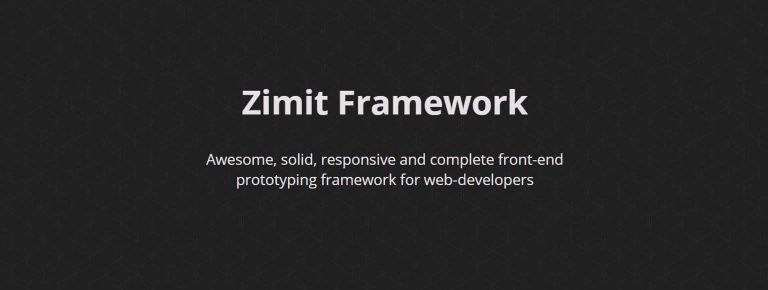
Zimit is a responsive prototyping framework for front-end web developers. It uses LESS to achieve modular and scalable CSS and the whole framework compiled and minified weight in at around 64KB.
Is Zimit a complete bootstrap alternative? No, no longer maintained.
Alternative to Bootstrap: pro and cons
Pros:
- Provides a framework designed for scalability and code that’s easy to read and understand
- It supports all modern web browsers and compiled it’s very lightweight.
Cons:
- No longer maintained
Github : github.com/yui/yui3
Popularity: None (47 stargazer)
Maintenance quality: No longer maintained
Conclusion
There are plenty of options when it comes to designing a responsive web application. The above-mentioned alternatives to Bootstrap are suitable in different scenarios. So, you have to choose wisely whether the framework can accomplish what you need or not.
Sometimes adding Bootstrap for a small web template may not be the right choice because it brings a lot of extra "weight" that may slow down your simple website.
A point to be noted is that Google "dislikes" websites that take more than 3 seconds to load. Also, it ends up decreasing your overall website ranking. So, you must spend some time to select the right CSS framework for your specific requirements.
Want to dive deeper into wireframes and frontend? Learn more about frontend development.

I am an economist responsible for Marketing and SEO strategies at Classpert. I usually write about entrepreneurship, e-learning platforms, marketing, SEO, stock trading, and related subjects.
